Intro and Overview
As a business owner, you are likely familiar with the importance of protecting your brand. In order to do so, you need to take proactive measures to monitor your domain name and promptly address trademark infringements against any unauthorized parties.
This comprehensive guide will provide you with all the information you need to get started.

What is Domain Name Monitoring?
Domain monitoring is the process of automatically detecting when domains are registered that include your company's name or a name similar to it.
Many organizations may register common variants of domains such as .net, .co, .io; but there can still be thousands of available top-level domains and even more variations of your company’s name. Registering all of them can be cost-prohibitive and time-consuming.
Impersonating domains are commonly used for phishing attacks, BEC campaigns, and for selling counterfeit goods. When these domains are left undetected, it can lead to credential theft, data breaches, significant brand and reputational damage, and loss of revenue & client trust.
With domain name monitoring, you can proactively track all of the domain registrations that have your brand in the domain name.
What is Trademark Enforcement?
If an infringer has registered a domain with your company’s trademark, your firm may need to take action against the infringer.
Trademark enforcement is the process of taking action against unauthorized use of your company's trademark. This can include sending cease and desist letters, filing civil lawsuits, or even working with law enforcement in cases of criminal infringement.
Failure to enforce a trademark by monitoring the mark for misuses will result in the weakening of the mark and a risk of losing your brand’s reputation, sales, business, customers, and more to the infringer.
Taking Proactive Measures with Defensive Registration & Domain Name Monitoring
As the old adage goes, "the best defense is a good offense."
Sometimes the easiest way to defend against infringers is by taking proactive measures to prevent being infringed upon.
This guide will go over a few proactive measures your firm can take to prevent brand infringement.
What is a Domain Name Portfolio?
A domain portfolio is a place where all your domains are listed and organized. It is a combination of various domain names that are owned by you or your corporation.
A domain portfolio houses all of the domains your company has acquired to achieve corporate goals, reach local online markets, gain product visibility, etc.. It commonly includes your brand’s company name or product lines in other popular top-level domains (TLDs), as well as common misspellings.
Investing in the proactive registration of similar domains to your main domain can often be more cost-effective than filing a dispute or lawsuit with those who infringe on your name.
What is Defensive Domain Registration?
Defensive domain name registration is the registration of domain names that are similar to your trademark name or domain name to prevent unaffiliated third parties or industry competitors from owning them.
Businesses should register permutations of their domains in advance to prevent competitors, former employees, disgruntled customers, cybersquatters, and other bad actors from taking them.
Anyone who is serious about protecting their online brand should start with "CNOBIC", the six TLDs comprising .com, .net, .org, .biz, .info, and .co. These are the most commonly recognized TLDs to consumers and therefore, become an appealing target for a bad actor to register.
Registering your brand in these six TLDs is the first line of defense against third parties compromising your brand.
For larger companies with more needed brand protection, "block" registrations may be a better solution than individually registering permutations of your firm’s domain.
What are DPML and Other Defensive Block Registrations?
There are several defensive block registrations that can prohibit (or "block") the registration of many TLDs and permutations of your domain. These include:
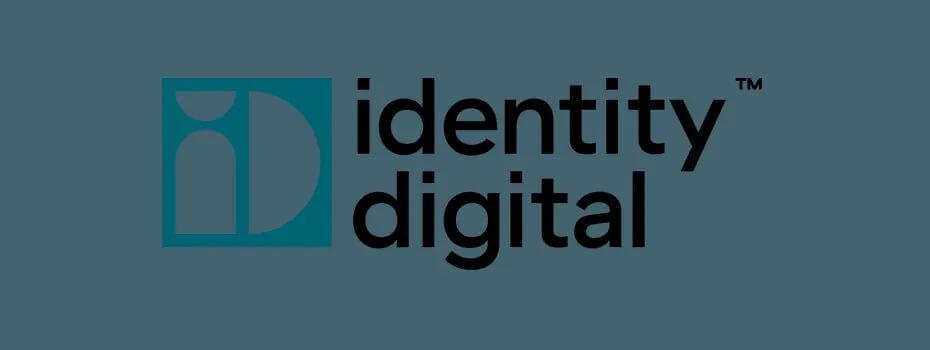
Domains Protected Marks List (DPML) and DPML+
DPML stands for the Domains Protected Marks List. Brand owners can add their trademark-related terms into the DPML and have them blocked from registration in all Identity Digital TLDs.
Identity Digital is the largest registry operator for new generic top level domains (gTLDs) with over 270 new TLDs currently and are expected to add more.
DPML protects trademarks holders against cybersquatting tactics at a fraction of what it would cost to defensively register the terms in Identity Digital TLDs.
DPML provides a block for exact match second-level domain across standard-priced Identity Digital TLDs. DPML subscribers can also submit unlimited overrides of blocked terms, without having additional wholesale override fees.
Brand owners must submit an exact match of their mark(s), or a term that contains their exact match mark(s). Once a term is accepted, that term is blocked from registration in all Identity Digital TLDs for the subscription duration. A DPML subscription can then be purchased or renewed in increments of one to ten years. Domains blocked by DPML are inactive until you decide you wish to put them to use for your business.
DPML+ offers several great benefits of DMPL standard, with enhanced security for premium domains and the flexibility to protect an additional 3 user-selected variants of your trademark.
To learn more, visit the DPML and DPML+ page.
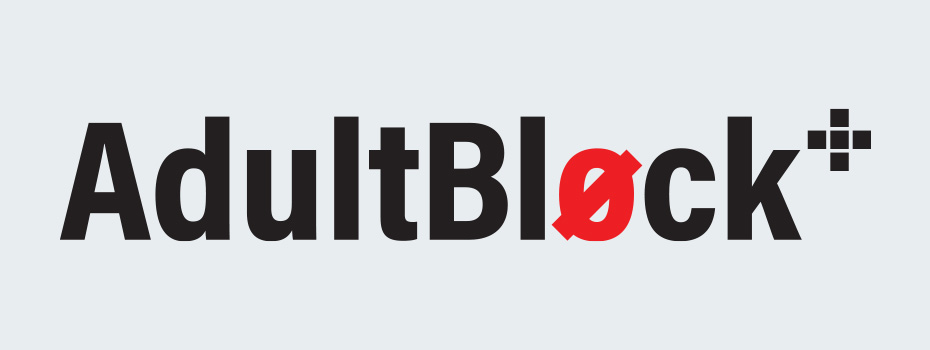
AdultBlock
AdultBlock is an expanded protection service that allows brand owners to block registered terms in .adult, .porn, .sex and .xxx domains for the primary purpose of maintaining your brand’s integrity and online reputation.
It provides brand holders with an excellent way to proactively prevent domain name abuse without paying a hefty registration fee, including premium domain names.
101domain also offers AdultBlock+ which blocks labels across all 4 TLDs, provides premium domain name blocking, and blocks domains when they are available.
However, it also allows variant labels in SMD file and Sunrise B and homographic protection that the normal AdultBlock does not include.
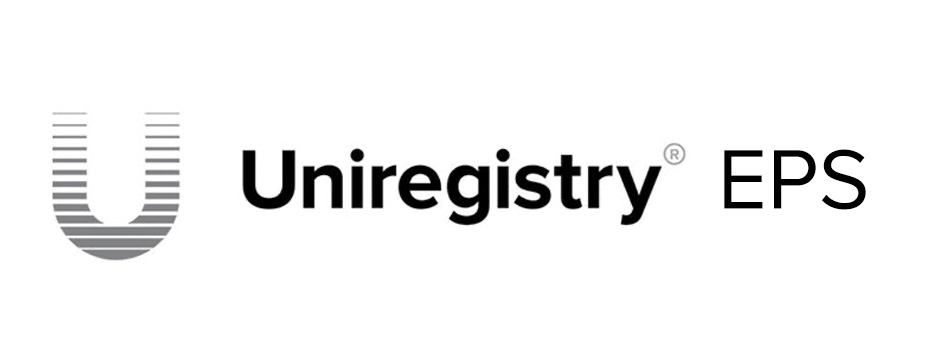
Uniregistry Extended Protection Service (Uni EPS)
Uni EPS will allow brand owners to block terms they have registered in the Trademark Clearinghouse (TMCH) throughout the Uniregistry Top Level Domain portfolio. The initial offering includes all 10 Uniregistry TLDs with a plan to incorporate additional TLDs in the future.
Additionally, Uni EPS+ also blocks the use of homoglyph characters in domain registrations commonly utilized by phishers aiming to confuse consumers with identical domain names.
Beware of Homographs
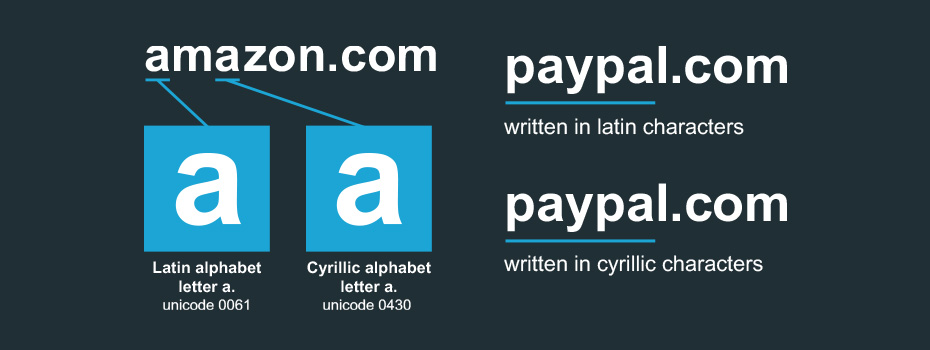
A homograph attack is a method of deception that happens when a bad actor leverages the similarities of characters to create and register deceptive domains.
This can also be called in different terms: homoglyph attack, script spoofing, and homograph domain name spoofing.
Homoglyphs or homographs are the characters that look alike, such as letters and numbers. Character sets with the greatest value in homograph attacks include ASCII, Cyrillic, Greek, and Armenian.
Prior to homographs, bad actors might try to take advantage of the ASCII digit zero (U+0030) and Latin letter O (U+006F). One might register "g00gle.com" to convince users they are on the company’s website. However, the difference between the zero and letter "O" is still visible within the address bar.
What is daunting about homographs is that the characters look identical to their Latin character equivalent.
The Cyrillic script includes seven (7) lowercase characters that are identical or virtually identical to characters in the Latin alphabet. Characters a, c, e, o, p, x and y exist in both Cyrillic and Latin alphabets and are physically indistinguishable in most fonts.
Additionally, the Cyrillic characters З, Ч and б are very much similar to the Latin numerals 3, 4 and 6, depending on the font.
The Greek alphabet is also common for homograph attacks because of their Latin counterparts.
Greek has 10 lowercase characters that are similar for the Latin lowercase letters e, i, k, n, p, t, u, w, x and y. Additionally, the lowercase Greek "α" is also similar to a Latin lowercase "a" in an italic font.
The Armenian alphabet also has many homographs with the Latin alphabet that make it susceptible to homograph attacks. For the Armenian alphabet, the lowercase letters o, n and u are similar to their Latin alphabet equivalent for most modern fonts.
The main disadvantage of utilizing Armenian is that many standard fonts don’t include Armenian characters, while most standard fonts do include Cyrillic and Greek characters.
Monitoring Domain Registrations

Even with the best defensive registration, a bad actor may still find a creative way to register a domain with your brand in an attempt to deceive your customers.
101domain’s leading platforms monitor your trademarks, and identify copycats, counterfeits, and misspelled domains spoofing your brand. They can assist you by giving valuable insights, helping you enforce your rights, and taking ownership of your domain names.
101domain offers a wide range of services to protect your brand online, including:
1) App Monitoring
Mobile App Watch covers the iTunes App Store, GooglePlay, Amazon App Store, and Windows App Store. You will receive a baseline report and notification whenever your trademark is included in a newly-launched app name or description, with weekly reports and your own portal.
2) Social Media Monitoring
Social Media Monitoring encompasses major social media platforms. These are Facebook, Twitter, Instagram, Pinterest, LinkedIn, and YouTube. You will also receive a baseline report and notification for trademark violations, with weekly reports and your own portal.
3) Web Content Watch
Web Content Watch screens for your brand name in the body and meta data of over one billion websites. Same with others, you will receive weekly reports and your own portal.
4) Web Page Change Watch
Web Page Change Watch monitors infringing sites for content changes to create records for potential litigation and enforce compliance of Cease & Desist letters. You will be alerted any time there is a change on the domain you're watching with this service.
5) Marketplace Watch
Marketplace Watch includes the following platforms: eBay, Alibaba, Amazon, Taobao, Trademe. Other sites such as Etsy can be added with a corresponding additional fee. You can also monitor online auctions with the daily reports and your own portal.
6) Image Recognition Filter
Image Watch utilizes artificial intelligence technology to scan the Internet for your logo and image use. You will also receive constant monitoring and reporting with your own portal.
Set up Google Alerts (Pro Tip)
In addition to monitoring registrations of your brand, it can also be helpful to monitor mentions of your brand. To do so, Google has a free tool called "Google Alerts."
Google Alerts will notify you via email whenever Google finds new mentions on the web—such as web pages, newspaper articles, or blogs—that match the user's search term(s).
You can set up Google alerts for your company or brand name, product names, industry terms, competitors, or just about any other keyword, with the steps below.
- Go to google.com/alerts
- Enter a search term to track. Google Alerts will show the results preview as you type in your search term.
- Select "Show options" (below the search box). Choose how often you would like to receive alerts: once a day; as it happens; once a week.
- Choose a source for your alerts: web, blogs, news, etc. If you are unsure, leave this as the default "automatic."
- Choose a language and region.
- Choose how many results you want to see: "all results," or "only the best results."
- Choose a delivery email address (this is where Google will send your alerts).
- Select "Create alert."
Google Alerts is a great way to stay on top of the latest news and information about your company, product, or industry. Additionally, finding unlinked mentions of your brand poses a backlink opportunity which can help your SEO.
Trademark Law Overview to Address Trademark Infringements Against Your Brand
Trademark Law Overview
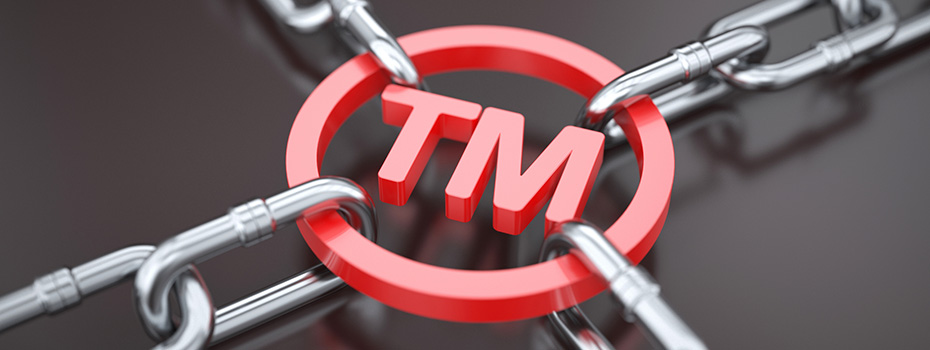
What is a Trademark?
A trademark is a word, phrase, symbol, or design that identifies and distinguishes the source of the goods of one party from those of others. Service marks and other marks are also governed by 'Trademark law.'
Specific common law trademark rights in the United States stem solely from the use of a mark.
However, to acquire the greatest protection for a mark, it is generally advisable to register the mark with the federal government.
Registered trademarks should be marked with the ® symbol. Unregistered trademarks should be marked with a "TM" and unregistered service marks should be marked with "SM."
What is "Confusingly Similar"?
In trademark law, "confusingly similar" refers to when a logo, text, or symbol is so distinctly similar to an existing trademark that the public might confuse the symbol with the existing trademark.
In order for there to be an infringement, the registered name must be confusingly similar to the existing trademark.
What is "Legitimate Interest"?
The owner of a trademark may take action against another party who uses the mark without permission, if such use is likely to cause confusion among consumers or dilute the value of the mark.
Legitimate interest can be demonstrated through an inquiry whether the respondent is using the domain in connection with a bona fide offering of goods or services.
For example, if an individual’s last name is "Forbes," then they have legitimate interest in the name, even though "Forbes" is a registered trademark. They may exercise that legitimate interest by including "Forbes" in their company name.
A finding that the respondent has a legitimate interest generally militates against a finding of bad faith.
What is "Bad Faith"?
In trademark law, bad faith presupposes the presence of an unfair state of mind or intention, as with its usual meaning in daily language.
In order to succeed in the claim of bad faith, the rightful owner of a trademark would need to submit sufficient evidence to prove that the alleged registrant was acting in malice or negligence when applying for the trademark.
Bad faith involves dishonesty and behavior which falls short of the standard of acceptable commercial behavior observed by reasonable and experienced men in the particular area being examined.
Tools to Enforce Trademark Infringement
Cease and Desist (C&D) Letter
A cease and desist letter is a document sent to an individual or business that is violating your trademark, copyright, or another form of intellectual property.
The cease and desist letter demands that the recipient stop infringing on your IP rights immediately.
The C&D letter will also include a threat of legal action if the recipient does not comply.
The goal of a cease and desist letter is to get the infringing party to stop their illegal activity without having to file a lawsuit.
However, if the recipient does not comply with the demands of the C&D letter, you may need to escalate the issue by filing a UDRP.
UDRP and URS
A complainant may file a UDRP or URS in order to recover an infringing domain.
The Uniform Domain-Name Dispute-Resolution Policy ("UDRP") is a policy that was developed by ICANN to provide a resolution for disputes between a Registrant and third party over the abusive registration of a domain.
A UDRP can be filed for generic top-level domains ("gTLDs") and some country code top-level domains ("ccTLDs") which have adopted the UDRP policy on a voluntary basis.
ccTLDs are not required to follow the UDRP policy but many have adopted the policy or have a policy which is similar to the UDRP.
One of the advantages of a UDRP is the significantly lower cost of filing compared to filing a lawsuit in a court of law.
According to WIPO, complainants can file a UDRP with a single panelist adjudicator for up to five domain names for $1,500.00.
If a Complainant wants the UDRP to be decided by three panelists, the cost for up to five domain names is $4,000.00.
In contrast, lawsuits can range in price, but are generally tens of thousands in litigation fees. It is highly cost effective to file a UDRP instead of a lawsuit to seek resolution for an abusive domain registration.
Uniform Rapid Suspension System (URS) serves as a more streamlined and cheaper approach to suspend or cancel a domain name exhibiting clear-cut bad faith or abuse.
URS is only limited to new generic top-level domains ("gTLDs"), which does not include many common gTLDs such as .com or .net.
Using DMCA Takedown to Address Trademark Infringements Against Your Brand
The Digital Millennium Copyright Act (DMCA) of 1998 is a federal law protecting copyright holders from online theft. These may include unlawful reproduction or distribution of their works, such as music, text, movies, and anything that is copyrighted.
As a solution practically available by any victim of copyright infringement in the United States, a DMCA takedown is often used to take down content, whereas a UDRP is used for claiming a domain.
In order to determine if a DMCA takedown will be successful, it’s important to understand the difference between a trademark and copyright, and fair use.
Trademark vs Copyright
According to U.S. Copyright office and the U.S. Patent Trademark Office, trademark and copyright are defined as:
"A trademark is a word, phrase, symbol, and/or design that identifies and distinguishes the source of the goods of one party from those of others… Unlike patents and copyrights, trademarks do not expire after a set term of years. Trademark rights come from actual "use.""
"A copyright protects original works of authorship including literary, dramatic, musical, and artistic works, such as poetry, novels, movies, songs, computer software, and architecture. The duration of copyright protection depends on several factors."
Both trademarks and copyrights can be registered with the USPTO, however, the application process and requirements are different.
What is Fair Use?
Fair use is a legal doctrine that promotes freedom of expression by allowing the unlicensed use of copyright-protected works in certain circumstances.
Balance in the law is necessary to protect both the rights of copyright holders and the public interest in the advancement of knowledge and creativity.
The four factors of fair use are the following:
- The purpose and character of the use, including whether such use is of commercial nature or is for nonprofit educational purposes.
- The nature of the copyrighted work.
- The amount and substantiality of the portion used in relation to the copyrighted work as a whole.
- The effect of the use upon the potential market for, or value of, the copyrighted work.
If the infringing party is not protected under "fair use," then a DMCA takedown may be an appropriate resolution to remove the copyrighted content.
How to File a DMCA Takedown
A DMCA takedown will need to follow the stated standard steps below:
- Reach out to the author to try and get the content taken down
- Reach out to the web host/site owner to get the content taken down
- File a DMCA takedown notice with the web host/service provider
- Request the takedown with an ISP
- Get the content removed from search engine results through the search engine’s takedown process
It is important to ensure that the filed notice is complete and accurate for quick remediation of someone’s rights.
Trademark Infringement Case Study Examples

Groupon
Back in 2011, Groupon struggled to keep their scheduled launch date in Australia when an Australian knock-off coupon brand called Scoopon registered groupon.com.au. Scoopon filed for the company name Groupon Pty Limited, and applied for the Groupon trademark in Australia just before Groupon was able to do so.
Originally, the owners of Scoopon settled on a price of $286,000 for the groupon.com.au domain name, but later changed their minds and requested that Groupon purchase the entire Scoopon brand.
Unfortunately, Groupon was forced to take the more expensive and lengthier route of filing a lawsuit against Scoopon for cybersquatting.
In 2012, the popular photo sharing website, Pinterest, filed a lawsuit against Qian Jin, a Chinese national known as a serial squatter for filing trademark applications of start-ups and American brands and snatching up domain names, including pinterests.com and pinterest.de.
In the lawsuit, Pinterest makes a case for cyber piracy, trademark infringement, trademark dilution, and unfair competition.
Pinterest filed a complaint claiming the domains were registered in bad faith, mimicking the signature red lettering of Pinterest and using the sites solely for online advertisements.
The court ruled in favor of the photo-sharing giant, allowing them to take control of over 100 domain names, which now all redirect to pinterest.com.
What is particularly concerning about this case is that Qian Jin attempted to obtain trademarks for these domains in China.
Although it was easy for Pinterest to block any related trademark applications in the United States, challenging trademark filings in China and other countries across the globe are not always as simple.

Michael Jordan
2016 was a monumental turning point against rampant trademark infringement issues in China.
A four-year long lawsuit, which resulted in the decision that Michael Jordan owns the rights to his name in Chinese characters (乔丹), set a new precedent for protecting personal names in trademark cases.
The verdict, from the Supreme People’s Court (the highest level of court in the mainland area of the People’s Republic of China), overturned the previous lower-court ruling that allowed Qiaodan Sports Company to use the Chinese characters for Jordan, to sell their products.
The Chinese legal system, widely known as being less friendly to visitors, took a step towards bettering the international business ecosystem in China with this decision.
The impact of this is profound for the many other foreign companies and celebrities that have languished in legal battles over the right to use their name in China.
This landmark decision sends a clear message to trademark squatters who file trademarks in bad faith.
Conclusion
Taking proactive measures through domain name monitoring and defensive domain registration, as well as trademark enforcement against those infringing on your brand are the keys to successful online brand protection.
By being aware of potential infringements and following the above advice, you can help reduce the risk of damage to your business. If you do find yourself in a situation where your trademark is being infringed, there are a number of options available to you for enforcing your rights.
101domain acts as your eyes and ears, monitoring the domain name space and staying ahead of new TLD launches to ensure no one is diluting your brand reputation and benefiting from your likeness.
Speak with an account executive to see how 101domain can help you with your online brand protection.
